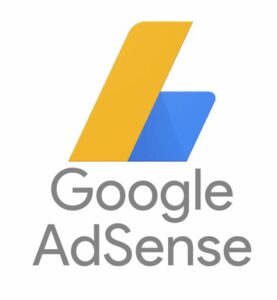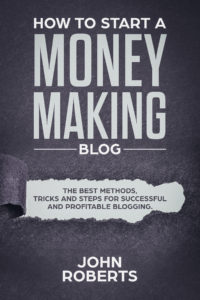Is Google Adsense a good way to monetize a website?
Google AdSense is a popular and effective way to monetize a website. It allows website owners to earn money by displaying ads on their website, and earning revenue from clicks or impressions on those ads.
impressions on those ads.
One of the main benefits of using AdSense is that it is easy to set up and use. Once a website owner has been approved for an AdSense account, they can easily add ad code to their website and start earning revenue.
AdSense also provides a wide variety of ad formats, sizes, and types to choose from, making it easy to find the best ad placements for a website’s design and content. Additionally, AdSense uses contextual targeting to ensure that ads displayed on a website are relevant to its content, which can help to increase engagement and revenue.
Another benefit of AdSense is that it is a scalable form of monetization. As a website’s traffic grows, so does the potential for earning revenue from AdSense ads. AdSense also allows website owners to customize the appearance of their ads to match the look and feel of their website, which can help to improve user experience and increase engagement.
However, it’s important to note that AdSense may not be the best monetization strategy for all websites. Some websites may have better results with other forms of advertising or affiliate marketing. Additionally, AdSense earnings can vary widely depending on factors such as niche, traffic levels, ad placement, and ad optimization. Nevertheless, for many websites, Google AdSense can be a great way to monetize their traffic and earn revenue.
How much can a website with 10,000 monthly visitors make with Google Adsense.
The amount a website can make with Google AdSense depends on several factors such as the website’s niche, content, ad placement, and ad optimization. However, as a general estimate, a website with 10,000 monthly visitors can make anywhere from a few hundred dollars to a few thousand dollars per month through Google AdSense.
The revenue earned from AdSense is based on a cost-per-click (CPC) model, where advertisers pay a certain amount per click on their ads. Google takes a cut of this revenue and shares the rest with the website owner.
The CPC rate varies widely depending on the niche and competition. Generally, niches with higher competition and higher CPC rates, such as finance, insurance, and technology, tend to earn more revenue per click. On the other hand, niches with lower competition and lower CPC rates, such as lifestyle and entertainment, tend to earn less revenue per click.
In addition to CPC rates, other factors such as ad placement, ad format, and ad optimization can also impact the revenue earned from AdSense. Websites that have well-placed ads and optimized ad formats tend to earn more revenue from AdSense.
Overall, while it’s difficult to give a precise figure for the revenue a website with 10,000 monthly visitors can earn from AdSense, it’s possible to earn a decent income if the website has good traffic and is optimized for AdSense.
Can you customize the advertising Google Adsense does on your website?
Yes, it is possible to customize the advertising that Google AdSense displays on your website. AdSense provides several options to control the types of ads that appear on your site, including ad category filtering, sensitive content filtering, and ad style customization.
Ad category filtering allows you to choose which categories of ads you want to allow or block from appearing on your site. For example, if you don’t want to display ads related to gambling or alcohol, you can choose to block those categories.
Sensitive content filtering is another option that allows you to block ads that may be considered inappropriate or offensive. You can choose to block ads related to topics such as adult content, drugs, or violence.
Ad style customization allows you to customize the appearance of the ads that appear on your site, including the size, font, and color. This can help to ensure that the ads fit in with your website’s design and layout.
In addition to these options, AdSense also uses contextual targeting to display ads that are relevant to the content on your site. This means that the ads displayed on your site are based on the keywords and topics of your content, which can help to increase engagement and revenue.
Overall, AdSense provides several options for customizing the advertising that appears on your website, which can help to improve user experience and increase revenue.
Which is better with Google Adsense, text or banner advertising?
There is no clear answer to whether text or banner advertising is better with Google AdSense as it depends on various factors, such as the type of website, the content, and the audience.
Text ads are typically smaller and appear as a few lines of text with a hyperlink. They blend in with the content of a website and are often seen as less intrusive than banner ads. Text ads can be a good option for websites that have a lot of textual content, as they can be integrated seamlessly into the content and are often more relevant to the reader.
On the other hand, banner ads are larger and more visually appealing than text ads. They typically include images or graphics and are often used to grab the attention of the reader. Banner ads can be a good option for websites that have a lot of visual content or for websites that cater to a younger audience.
Ultimately, the best option for a website depends on the type of content, the audience, and the goals of the website owner. Some websites may benefit from using a combination of text and banner ads to reach a wider audience and increase revenue. It’s also important to consider the placement and optimization of ads to ensure they are effective in generating revenue.
How does Google Adsense compare with other ways to monetize a website?
Google AdSense is just one of many ways to monetize a website. Here are some ways in which AdSense compares to other common methods of website monetization:
- Affiliate marketing: Affiliate marketing is when you promote other companies’ products or services on your website and earn a commission on any sales made through your referral link. AdSense is different from affiliate marketing because it focuses on advertising revenue rather than commission-based sales.
- Sponsored content: Sponsored content is when you are paid to publish content on your website that promotes a particular product or service. While AdSense provides advertising revenue, sponsored content provides direct payment for featuring content on your website.
- Direct advertising: Direct advertising is when you sell advertising space directly to companies that want to advertise on your website. While this can potentially be more lucrative than AdSense, it requires a lot more effort to sell ad space, manage the ads, and handle payment processing.
- Subscription-based models: Subscription-based models involve charging users a fee for access to premium content or services on your website. This can be a viable alternative to AdSense for websites that offer valuable content or services that users are willing to pay for.
Overall, AdSense provides a relatively easy and passive way to earn revenue from a website through advertising. However, the revenue potential is generally lower compared to other monetization strategies. The best strategy depends on the type of website, the audience, and the goals of the website owner.



